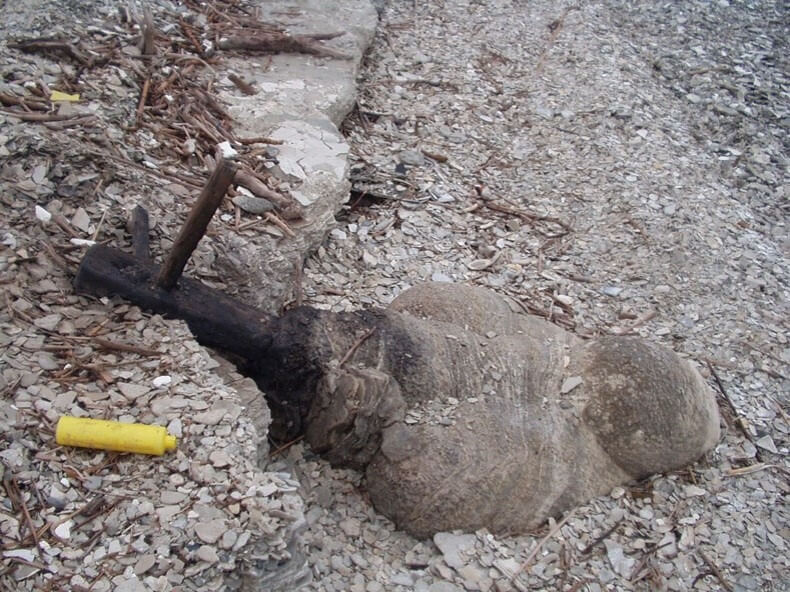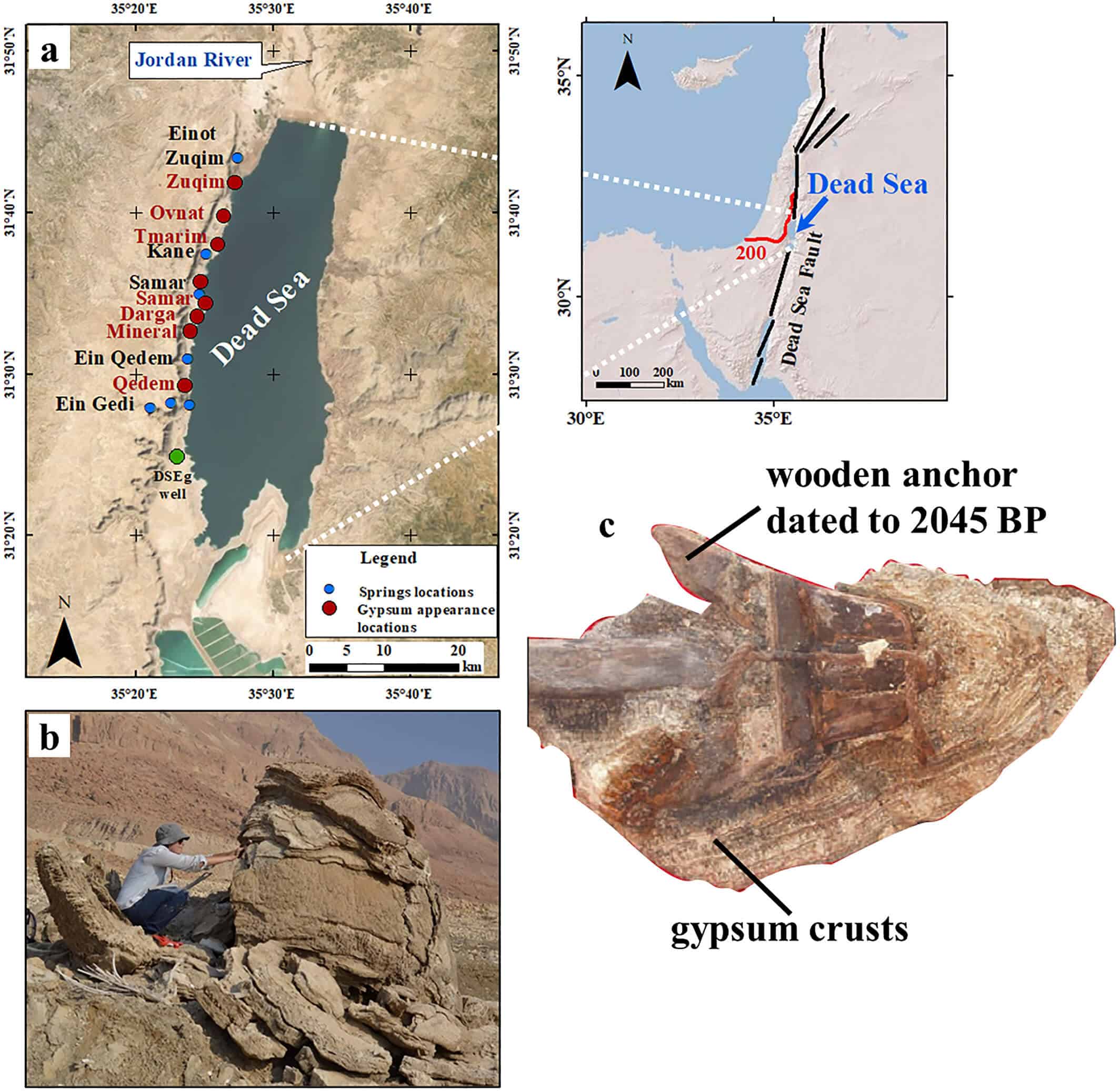The Dead Sea, the lowest place on Earth (its current level is 435 m below sea level), collects water and silt from a wide drainage basin that stretches between the desert and the Mediterranean climate zone, and serves as a "rain gauge" for the Levant region. Has the Dead Sea always been at such a low level and has the drainage basin of the lake always been particularly arid - or is it the current climate changes and human influence that have contributed to the significant drop in the level since the 400s (when the level stood at a height of XNUMX m below sea level )?
A new scientific article by Nurit Weber, a doctoral student at the Institute of Earth Sciences at the Hebrew University and the Geological Survey of Israel, which was recently published in the prestigious journal of the American Geophysical Union Geophysical Research Letters, shows that in many periods of time during the last 7,000 years (most of the Holocene period - a geological period that began approx. -11,700 years and continues to the present), the level of the Dead Sea was between 420 and 430 m below sea level, the lake extended over the area of the northern basin only and the region of Israel (and the southern Levant) was characterized by a dry and hot climate. During the periods when the lake was at its lowest levels, hot springs abounded along the western coast from the area of Einat Tzukim to Ein Gedi and near the springs, unique gypsum bodies were formed.
Nurit Weber's study of the plaster bodies at Einat Kedem beach (north of Ein Gedi) began almost by chance following a particularly intriguing archaeological discovery. In December 2003, Dr Gideon Hadas, archaeologist from the Ein Gedi group to Prof. Moti Stein from the Hebrew University and asked him to come to Einat Kedem beach. There, in the outcropping of rocks below the blurred path that passed a few tens of meters above the shore of the lake (at the time it stood at a height of 419 meters below sea level), a large rock block was seen stuck in the layers of sediments, which at a close and first glance looked like an elongated onion made of thick membranes of gypsum enveloping the trunk of a Wood. Prof. Stein recalled the event: "We dug around the block of plaster membranes and recovered the same body from the sediments of the beach. With great effort and with the help of ropes and a pulley we got him up to the blur trail and from there in a van to Kibbutz Ein Gedi. Gideon excitedly said that inside the block of plaster there was a large boat anchor hidden.'
Indeed, the plaster shells encased a large boat anchor, built of wood and inside crumbled lumps of lead. Later it turned out that it was a boat from the time of King Herod. An examination using the radiocarbon method (carbon 14) showed that the wood building the anchor as well as the rope kept on it date from this period. The anchor probably got stuck between the coastal rocks while Herodos was trying to reach the hot springs that flow from the coast of Einat Kedem. Dr. Hadas and Prof. Stein investigated various aspects of the anchor, for example with the help of isotopes of lead on materials found in the weight area of the anchor they determined that the lead ingots came from a mine in Italy. For Nurit Weber, the find was significant because it revealed the importance of the Einat Kedem area for Dead Sea research, and especially for the study of the development of Dead Sea salinity. During the 17 years that have passed since the anchor was found, the level of the Dead Sea has receded by 25 meters, a retreat that resulted in the exposure of unique plaster bodies - which interested Nurit Weber. The anchor itself, by the way, was donated to the Israel Museum and is displayed there in the archaeological permanent exhibition in the Roman period wing.

In her doctoral thesis, Nurit Weber described and dated the gypsum bodies in Einat Kedem, and even reconstructed sedimentary structures, resembling stream fans, which she called "gypsum deltas". Also, isolated concentric plaster structures that were scattered along the beaches were studied. The researcher showed that the gypsum deltas and the isolated gypsum bodies were formed during periods when the Dead Sea levels were low. The hot spring water with a composition similar to the pre-modern springs mixed with the Dead Sea water and as a result of the mixing the gypsum sink.

Radiocarbon dating of the plaster structures indicated that the ages of the formation of the unique plaster structures and the activity of the hot-salty springs, of the type of ancient springs and the low lake levels, correspond to times of minimum solar radiation. For example, the Oort Solar Minimum event (around the year 1000) that occurred during the period known as the "Medieval Warm Period". During this time, the Levant region underwent desiccation and desertification and the level of the Dead Sea dropped to a minimum.
"If the natural conditions in the region return in the near future to the pattern of dehydration and desertification that characterized most of the Holocene period, they will further strengthen the expected dehydration phenomena at the same time as global warming," explains Weber.
Nurit Weber's research shows that the level of the Dead Sea dropped gradually during the Holocene period, except for certain periods (for example the Upper Bronze Age and the Roman-Byzantine period when the level was particularly high and reached heights of 390-380 m below sea level) following the strengthening of the regional rainfall regime. The current reality of the level drop reflects a response to human activity - mainly the damming of the Jordan and its various tributaries. That is, the current drop in the level is something disconnected from what happened in the last thousands of years. Taking a broader view, Nurit showed that the surface of the Dead Sea was at a very low level during most of the Holocene, which indicates extreme and persistent regional aridity in the Dead Sea drainage basin and the Levant region as a whole.
Moreover, according to the researcher, the "historical memory" of most of us from our childhood trips to the Dead Sea and the map of the lake in school atlases is of "one lake" that stretches from the square in the south of the Dead Sea to Kibbutz Kalia in the north of the Dead Sea. This "one lake" is related to the relatively short period when the lake level rose above 400 m below sea level in the 18th and 19th centuries and at the beginning of the 20th century, and does not describe the typical natural state of the Dead Sea during most of the Holocene period - an arid period especially for this area. According to the global warming models, the eastern Mediterranean region is expected to undergo significant drying in the near future, a change in the level that entails a severe water shortage for the inhabitants of the region. Therefore, follow-up studies are expected to continue to examine the processes of desiccation and desertification that have occurred in the Dead Sea over the past thousands of years.
More of the topic in Hayadan:
- Archaeological cooperation between the University of Haifa and their colleagues in Turkey resulted in an important discovery
- Anchor is raised
- Drilling at the bottom of the Dead Sea records 220,000 years of earthquakes
- The longest salt cave in the world was located in the south of the Dead Sea - ten kilometers long
- Why should a canal from the Red Sea to the Dead Sea be opposed?
